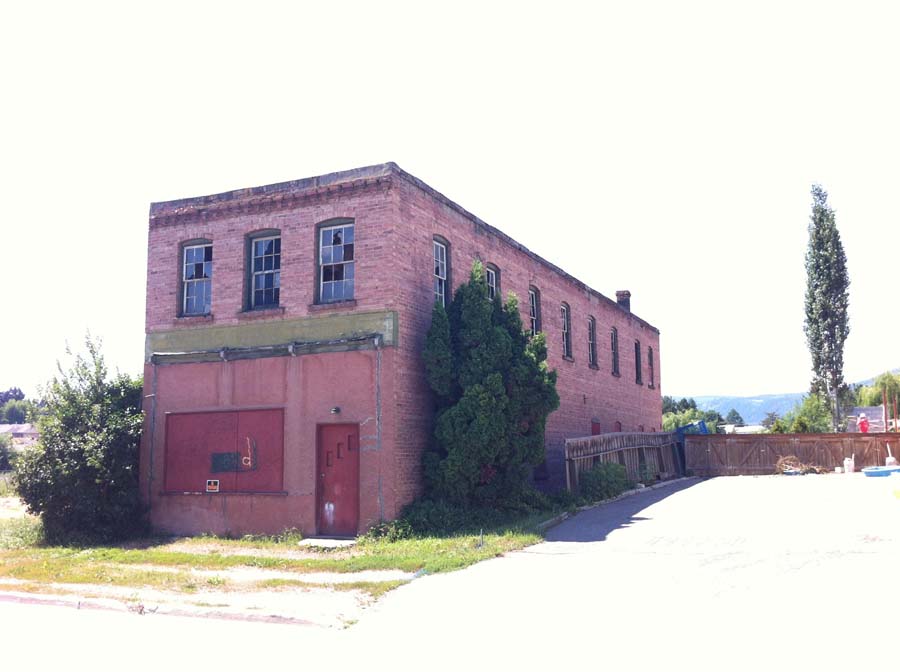Return to main Vanishing B.C. page Return to home page
Page last updated November 27, 2016
© Michael Kluckner
| Written/painted in 2004: The remains of one of BC's
historic Chinatowns. Because of a dispute between the Shuswap & Okanagan Railway and a landowner a mile to the north, Armstrong became established on the "Island," the sandbank in the middle distance with swamps and sloughs on both sides. The railway line and the town's main buildings were established on this high ground along today's Pleasant Valley Road. Once the swamps in the foreground and on the far side of the "Island" were drained, Chinese farmers took them over, turning the flats into neatly cultivated vegetable fields and earning Armstrong its nickname Celery City. The dark brown wooden cabins along the road (Okanagan Street) midway across the flats, painted in January 2004, are the last survivors of a group that provided accommodation during the growing season for the field workers.
(See Johnny Serra, Armstrong Packing Houses, Okanagan Historical Society, 28th report, 1964; Peter Critchley, The Chinese in Armstrong, OHS, 63rd report, 1999; Armstrong Heritage Inventory, 2001. Thanks to Lisa Mori, curator, Armstrong-Spallumcheen Museum-Archives.) From Dudley Price, 2014: Just a quick note from Armstrong to let you know that despite attempts to preserve this building Armstrong council was instrumental in having it demolished last year. History vanishing. Nothing has gone up in its place (other than a "for sale" sign) – the powers-that-be figured that it was just a derelict old unsafe building and no amount of historical significance was able to save it. I don't even think the owner's family cared one way or the other. If I get a chance to look up the relevant articles in the Armstrong Advertiser I will forward them to you. Photo from Randy Glen:  ***
Note the Microcosm
Photo site with pictures of the building.
|
